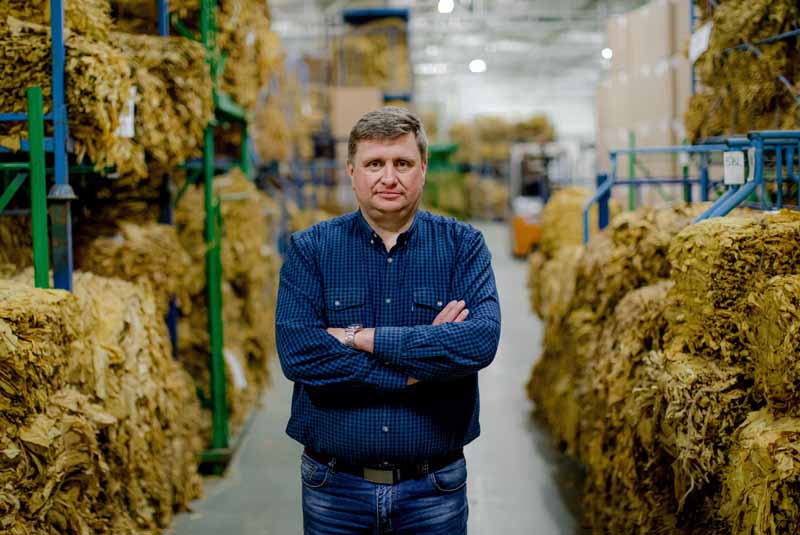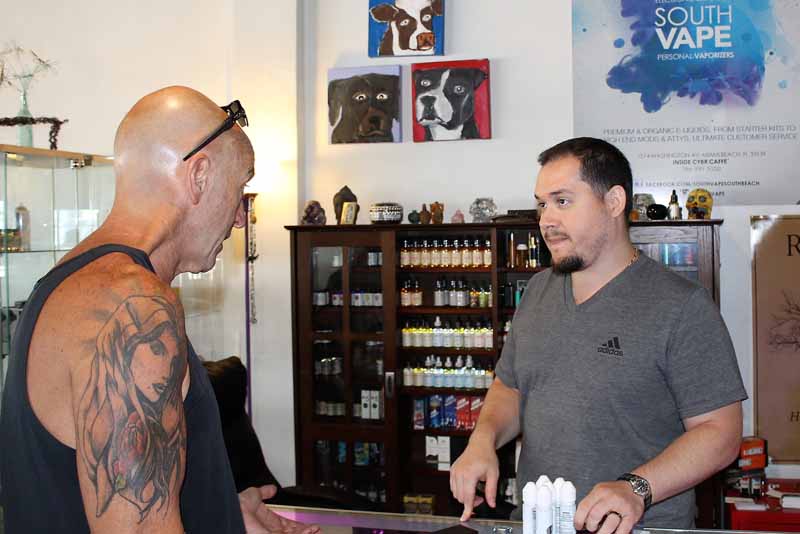While a victory for tobacco harm reduction, the impact of the U.S. Food and Drug Administration’s recent nod to General snus should not be overstated.
By George Gay
A number of people have made the point, one way or another, that it is often unpalatable to find yourself in agreement with a majority opinion. And a few seconds’ thought will provide numerous examples of when and where this would have been true. Though, in some cases and for some people, the truth might have become obvious only in retrospect. Many of those examples, however, will also demonstrate that it can be uncomfortable, even dangerous, to challenge majority views.
But even when there is no danger involved, most people don’t like to be the odd one out, as numerous experiments have shown. If you ask somebody to measure the length of a stick and then ask her to pick the length she measured from a multiple-choice answer, she will almost always come up with the right answer. But conduct the same experiment with the same person and six others primed to pick and declare out loud before she does one of the other answers, and the subject of the experiment is highly likely to fall in with the answer given by the others, no matter that the answer might not bear a close resemblance to the length of the stick. The thinking seems to be better wrong than different.
I find this attitude difficult to accept, and so I find myself partly at odds with a development that many have found inspiring. In October, the U.S. Food and Drug Administration (FDA) announced that it had, for the first time, authorized the marketing of products through its modified-risk tobacco product (MRTP) pathway. The authorizations are for eight Swedish Match USA (SMUSA) snus smokeless tobacco products sold under the General brand name, the FDA said in a statement published on Oct. 22.
At first glance, this seemed all very positive, but the more I read, the more it struck me that the press note and some of the commentary attached to it did not warrant the sound of triumph that emerged—the idea that what happened represented a major victory for the future of tobacco harm reduction. On close reading, while the announcement was to be welcomed as a tiny step in the right direction, it carried so much baggage that the step was unsteady.
The “for the first time” phrase used in the first sentence of the press note presented an impressive front, but the reality is much different. The FDA’s first-time decision and announcement had taken more than five years—an unconscionable length of time given that traditional cigarettes continued throughout that period to take the lives of more than 400,000 smokers a year. And it wasn’t as if the latest application had been the first. Three years ago, the FDA, in effect, turned down three reasonable requests from SMUSA in relation to health warnings that were required to be applied to all smokeless products, including General snus, condemning the U.S. to another three years at 400,000 deaths a year.
It would be absurd, of course, to say that 2 million people’s lives could have been saved over those five years if the MRTP had been granted in reasonable time, but the chances are that many lives would have been saved and that the momentum behind switching from combustibles to Swedish-style snus would by now have built a solid foundation.
Nudge, nudge, wink, wink
As it is, SMUSA has to start from now, and still has a mountain to climb in changing attitudes to its authorized products, in part because official information on the health implications of using snus has been misleading and because, even now, the October FDA announcement is nothing if not equivocal. And it couldn’t be otherwise simply because it is based on what is termed a “modified risk.” What is the woman in the street to make of a “modified risk”? Hey, they think they can save my right leg, but apparently my left arm might drop off.
True, the FDA decision allows SMUSA to market the products in question by saying, “Using General snus instead of cigarettes puts you at a lower risk of mouth cancer, heart disease, lung cancer, stroke, emphysema and chronic bronchitis.” But, according to the press note, this is just a “claim.” And just to underline this, the third paragraph states, “While today’s decision permits the eight General brand snus smokeless tobacco products to be sold in the U.S. with a modified-risk claim, it does not mean these products are safe or ‘FDA approved.’ All tobacco products are potentially harmful and addictive, and those who do not use tobacco products should continue to refrain from their use. The modified-risk orders are product specific and limited to five years.”
Again, what is the woman in the street to make of this? Nudge, nudge, wink, wink—don’t touch this stuff with a bargepole?
And if you didn’t get that hint, perhaps you picked up the one in the previous paragraph: “In an effort to help prevent youth access and exposure, the agency has also placed stringent advertising and promotion restrictions on the products, including a requirement to restrict advertising to adults. In addition, the products’ packaging and advertising must also bear the warning statements required for all smokeless tobacco products.”
And what are those warnings? This product can cause mouth cancer, and this product can cause gum disease and tooth loss. In other words, the FDA is hedging its bets. Yes, it seems to be saying, these General snus products are demonstrably different to others on the market and that is why the agency has issued an MRTP, but, on the other hand, they aren’t different and that is why they have to carry the same warnings as other smokeless products.
And just in case you’re particularly dumb and still didn’t quite get the message, the same points that are laid out in the second paragraph are repeated in the fourth. The FDA has cloaked itself in so many layers of the cautionary principle that it is unable to move. After five years of examining what must be close to the most benign tobacco product ever to be devised, it was unable to issue an unqualified statement saying the consumption of these eight products is way less risky than smoking.
Quoting acting FDA Commissioner Ned Sharpless, the FDA’s press note states, “Today’s action demonstrates the viability of the pathway for companies to market specific tobacco products as less harmful to consumers but only following a thorough scientific evaluation by the FDA. Our team of scientific experts examined these applications to ensure that the tobacco products meet the public health standards in the law.”
Of course, this is true, up to a point, but it hides some other uncomfortable truths. Yes, it is the case that the recently issued MRTP has proved that, 10 years after the enactment of the Family Smoking Prevention and Tobacco Control Act, one company has found a way to convince the FDA to equivocate on the health implications of eight of its products. But that is an awfully long time and an awful lot of resources to not get very far. And even that limited achievement is not set in stone. As Sharpless was quoted in the press note, “Should any information lead us to determine that the marketing of these products as posing less risk no longer benefits the health of the population as a whole, the agency would consider withdrawing this authorization.” It is worth noting that when Sharpless talks of “any information,” he is including information undoubtedly already being prepared by the legions of quit-or-die advocates circling the courts.
A viable pathway for who?
You have to ask yourself, what does it mean for Sharpless to say that this is a viable pathway for “companies to market specific tobacco products as less harmful to consumers”? Let’s be aware of the import of this. He cannot possibly be talking about any old company; he has to be talking about companies with big pockets. No ordinary company could afford to allocate to such an uncertain undertaking five years’ worth of the sorts of resources necessary to put together and present the results of the detailed research demanded by the FDA.
The investment does not stop with the granting of the MRTP. The press note points out, “With the authorization of these products, the company is required to conduct post-market studies to determine the impact of modified-risk tobacco product orders on consumer perception, behavior and health …. The company is required to report regularly to the FDA with information regarding the products on the market, including, but not limited to, ongoing and completed consumer research studies, advertising, marketing plans, sales data, information on current and new users, manufacturing changes and adverse experiences.” It is to be hoped that quit-or-die advocates will be held to the same standards.
Later, the note adds, “To continuously market these same products with the same modified-risk information beyond the five-year limit would require the company to submit a request for renewal and receive renewal authorization from the FDA before the current orders expire.” Of course, it should add that companies can continue to market traditional cigarettes regardless.
And what of the “specific tobacco products” that Sharpless talks about? Are we somehow to believe that the issuing of an MRTP in the case of eight General snus products indicates that other types of tobacco products might soon be in the pipeline? I don’t think so—not in this millennium. Even other snus products might struggle. Take a look at what the FDA has to say: “In addition to these lower risks relative to cigarette smoking, the FDA previously determined that the levels of two potent carcinogens in smokeless tobacco products called NNN and NNK [both tobacco-specific nitrosamines] are lower in these General snus products than [in] the vast majority of smokeless tobacco products on the U.S. market. In addition, the evidence showed [that] when used exclusively instead of other smokeless tobacco products, the General snus products offer the potential for reductions in oral cancer risk.”
Focus on the negative
The FDA, it seems to me, tends to be drawn to the negative rather than the positive. In its press note, the agency makes the point that as part of its assessments, it has to take into account both users of tobacco products and persons who do not currently use tobacco products. “In making this assessment, the agency must consider, among other things, whether those who do not use tobacco products would start using the product and whether existing tobacco users who would have otherwise quit would switch to the modified-risk product instead,” it said. Why this example, you might ask? Why not the positive example of taking into account the effect on nontobacco users of tobacco users switching to a product generating no secondhand smoke?
With such a negative approach, the agency seems to work to undermine the evidence that it apparently accepts. Few would say the FDA should look at this issue through rose-colored glasses. But in making the announcement, it should have emphasized the positive. There are real positives down in paragraph six, for example: “The FDA’s review determined that the claim proposed by the company in its application is supported by scientific evidence, that consumers understand the claim and appropriately perceive the relative risk of these products compared to cigarettes, and that the modified-risk products, as actually used by consumers, will significantly reduce harm and the risk of tobacco-related disease to individual tobacco users and benefit the health of the population as a whole.”
In addition, paragraph eight says, “The available evidence does not demonstrate significant youth initiation of these products, and evidence submitted by the company also found low levels of intentions to buy the product among nonusers of tobacco (including young adults) and, importantly, found that the inclusion of the modified-risk claim did not affect these intentions.”
My views on the MRTP announcement might not chime with the majority view of what has happened, but I would suggest that those who have welcomed these MRTP authorizations with open arms should consider how, in doing so, they might be helping to lower the ambitions of tobacco harm reduction.



















